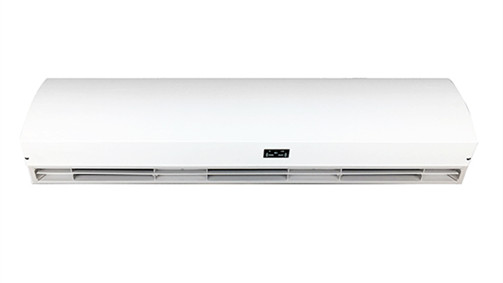THE BENEFITS OF ARCHITECTURAL AIR CURTAINS
Architectural air curtains have become very popular over the years for a number of reasons. Firstly, they can improve energy savings. By reducing external temperatures, they can keep interior rooms warmer for longer and, as a result, help to keep the average home a few degrees warmer than it would otherwise be. They also provide comfort and relaxation throughout the year, allowing people to enjoy the comfort of home as if it were still warm and comfortable even in the bleak winter months.
As well as helping to save on your energy bills, they are likely to prevent or reduce a large number of external environmental problems such as damage to carpets and furniture and even damage to the windows and doors.
How air curtains work is simple - they hang from the ceiling, creating a layer of space between the floor and the wall. The advantage is that they can be tailored to fit almost any space, depending on the requirements of the customer. For example, a smartphone in an apartment can be fitted with a special 'privacy tab', which will block out all others and act as a guard against prying eyes. If you want the window to open, just raise the app, and let your smartphone do the rest. Many designs also double up as a mini desk, allowing you to work whilst you are on the go, whether you are away from home or not.
How to make architectural air curtains work more effectively? You need to ensure that the window is always kept open for ventilation when possible. If the window is an extra large one, it may even be necessary to use a fan to speed up the process of ventilation. In this case, the fan will pull the hot air out of the room, and the cool air in. If you have a room that is difficult to keep air flowing properly, for example a bedroom where there is no other venting option, you can still reduce energy costs. You can install a window fan behind the curtains, or in the corner of the room, which will suck out the warm air, and push in the cooler air into the room.
Architectural air curtains are also commonly used to prevent heaters from getting into rooms that are not desirable to stay in, such as the kitchen. These can be made of a thick plastic material that acts as an insulator, keeping the heaters inside the room, while preventing them from heating up living spaces around them. The only draw back of these is that they do not provide much in the way of insulation and do not have a ventilation system installed in the form of fans. They are also quite easy to break, and tend to collect crumbs and other debris easily.
Architectural air curtains are also an effective way to control the amount of heat that escapes from your air conditioners. If the air door or window is left open while the system is running, it is ineffective in drawing in cool air from the outside. This results in the conditioner pulling cooler air into the house, where it is wasted. By closing the window or door, you can keep the air temperature at a higher level and thereby reduce the energy savings that are incurred by the AC. This does not mean, however, that you cannot open the window or door!
Architectural air curtains offer many benefits to both the homeowner and to his or her air conditioning system. While they do not offer any energy savings, they do provide an effective way of reducing drafts and providing protection against flying insects and heat. Many people use them to help stop the spread of mold within the house, reducing allergies and asthma attacks. It is very easy to maintain and care for these items, as they require no special cleaning or maintenance procedures. Many come with the option of Velcro tabs or loops for easy hanging and removal.










